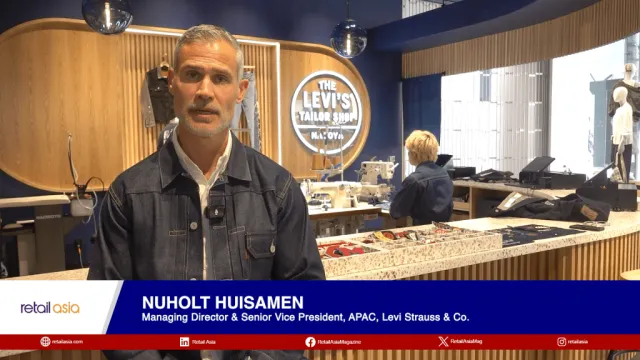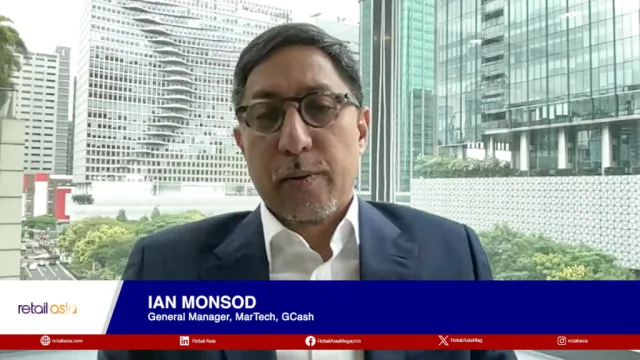
Philippines yet to feel impact of lower capitalisation for foreign retailers
Law setting minimal required investment may attract not the big retailers but small and medium-scale foreign businesses.
Over a year since the Philippine government enacted the law to lower the minimum investment for foreign retailers to enter the local market, the domestic retail sector has experienced minimal transformation.
Rather than witnessing an influx of new players, it is the established foreign retailers already present in the country that continue to pursue expansion, albeit after facing delays caused by the pandemic.
Under the amendment, foreign retailers now only need around $446,000 (P25m) of investments, down from the previous $2.5m requirement. If the foreign retailer has more than one physical store, each store must have a minimum investment of $178,000 (P10m). They are also required to maintain a paid-up capital of $446,000 (P25m).
Interestingly, Philippine Retailers Association (PRA) Chairman Paul Santos said this current floor amount for investing in the retail market “will invite not the big foreign retailers that the law presumably wanted to invite into the country.”
Interviewed by Retail Asia, Santos explained that foreign retailers are not too concerned about capitalisation requirements as they are with incentives and the economic environment that would allow their business to grow.
So, what is there to expect with the minimal capitalisation in force? “It would make the Philippines now attractive to small and medium-scale foreign retailers who may want to do business in the Philippines competing with Philippine small and medium-scale enterprises,” Santos said.
More insights from the PRA chairman on the trends for retail operations in the Philippines and the challenges of the sector were shared in this interview:
How has the Philippine retail sector performed in 2022?
Reports would suggest that 2022 retail sales performance was definitely a lot better than 2021 and 2020, mainly because movement restrictions were progressively lifted and people suddenly had the opportunity to go out again to their favourite shopping malls. But anecdotal evidence would suggest that the 2022 business is still lower than the pre-pandemic 2019 figures. But there seems to be some more reason to be hopeful because household spending was recorded to increase anywhere from 5.1% to 5.5% over the previous year. Moving on to 2023, they have reasons to be optimistic for better sales performance, and in the years ahead.
Can you name the significant changes in consumer behaviour in the country that shaped retailers’ operations?
The greatest shift in 2022 and earlier is that consumers are far more relaxed and far more accepting of e-commerce. Beginning in 2020, people had no other means to go out and shop except try e-commerce. As the years went on, consumers wanted to find ways or were looking for ways or looking for retailers who combine the ease of e-commerce with in-store shopping. In-store retailers should adopt e-commerce practices in their physical store businesses as well. It’s a cliche when people say omnichannel, but this is the direction that Philippine retailers are being dragged into.
What are the emerging trends among strategies employed by retailers in their businesses?
A lot of the changes occurred among retailers. A lot of it occurred in the back office. Prior to 2020, many retailers have been adopting more technological solutions to make their back-office operations more efficient. Now, with the pandemic and the lockdown occurring immediately thereafter, there was a need to make these processes available everywhere outside of their offices. The greatest change amongst retailers, apart from the increasing pace of automation in the back office, is the adoption of cloud solutions to transfer as many of these processes to the cloud as possible. Of course, there are some processes that can’t be moved to the cloud like warehousing logistics, stocking the stores, displaying stores, displaying in the stores themselves dealing with customers. But whatever could be moved to the cloud, our retailers did so.
In 2021, the Philippine Government passed a law that amended the Retail Trade Liberalisation Act of 2000 to ease the requirements for foreign retailers to enter the domestic market. How has this changed the retail landscape in the Philippines?
On the change, it has not yet, actually happened. What we’re seeing would be existing foreign retailers already doing business in the Philippines expanding their presence. But according to my knowledge, this has already been planned long before the epidemic but was just postponed.
The PRA has always held that investment in Philippine retailing is not just about liberalizing the market. A lot of it has to do with economic motivations. For example, before a foreign retailer would be putting up investment in the Philippines in terms of direct market operations, it would want to see for itself if the Philippine retail economy and the Philippine consumers could support or buy the goods and services that it is trying to sell. So liberalisation in and of itself, is not a guarantee that businesses would invest in the Philippine market.
That being said, when the Philippine economy started to improve, beginning in 2010, you started to see a lot of foreign you see started to see more and more foreign retailers entering the Philippine market simply because looking at the Philippines as a track record, it made sense to do so. According to testimony delivered by a government office, when they inquired about the potential of foreign businesses doing retail business in the Philippines, a lot of the respondents said the original limit set by the retail trade liberalisation law was no barrier to them doing business in the Philippines. What they were more concerned about were other issues that other foreign investors raised with this office like infrastructure, energy costs, the rule of law, the ability to repatriate profits at will and so on.
For example, in Thailand, they have the equivalent retail trade restrictions on foreigners. Notwithstanding this barrier, you still see a lot of foreign retailers doing business in Thailand because of its higher GDP compared to the Philippines. On that score alone, foreigners still decide to do business in Thailand, because simply put, they think they can make money because the market can obviously afford what they’re selling.
How can local brands stay competitive amidst the entry of foreign businesses?
Well, I think for domestic businesses, one advantage they have is that they are already doing business in the Philippines. They are presumed to be more familiar with Philippine tastes and quirks, if you will. So they have that advantage of being a first mover of being already in place when these foreign guys come forward and do their business in the Philippines.
Foreign businesses also have the advantage of confidence to operate beyond their comfort zones. They’re prepared to do so. They have their own skill sets that they think will allow them to compete in a foreign environment because of the brands they represent or the brands that they own. They have brand values and brand attributes that the target market wants. If the domestic retailer or brand is not attuned to the tastes, wants, likes and dislikes of their market, they will succumb to competitive pressure.
What’s your outlook for the Philippine retail industry?
Retail growth is assured, I think in the near to medium term because of this population growth. Some are saying that 2023 probably will be the year where their annual retail sales will be equal to or more than in 2019. The only clouds that we see on the horizon are basically inflation and political and economic uncertainties brought about by the war in Ukraine. We’ve seen supply chain disruptions during the pandemic and even after, so retailers are being more flexible and more resilient in the way that they source their goods from overseas or from domestic manufacturers.
All of us thought, coming into 2023, that inflation would have been short-lived. Inflation doesn’t seem to be letting up. Wages aren’t going up yet because the government is afraid that if wages are increased, especially with a statutory minimum wage, that will simply stoke inflation even further. The tools that the government has at its disposal to clamp down on retail inflation is short of a government decree compelling businesses to keep their prices at a certain level. I don’t think they have that many tools left to persuade businesses not to increase prices because of their own inflationary pressures.
At the same time, because of the prevalence of e-commerce in the country, retailers are now taking that cliche omnichannel more seriously than ever before. It’s the Holy Grail of retail operations. That would be the trend moving forward in 2023 onwards, to be able to compete not only with their fellow domestic businesses but also with foreign competitors as well. Philippine retailers will need to adopt more and more omnichannel techniques in order to compete effectively this year and in the years beyond.

 Advertise
Advertise



